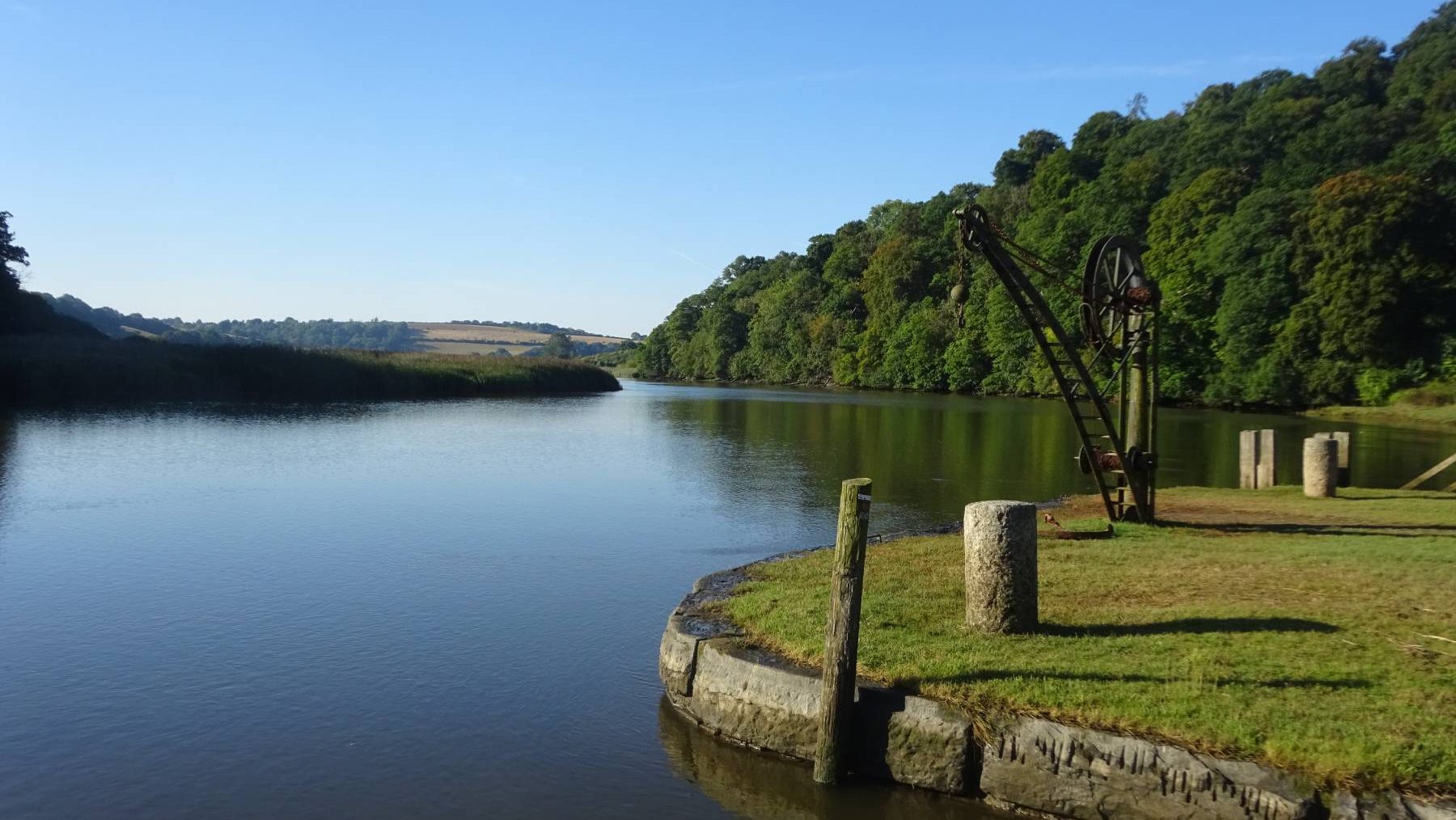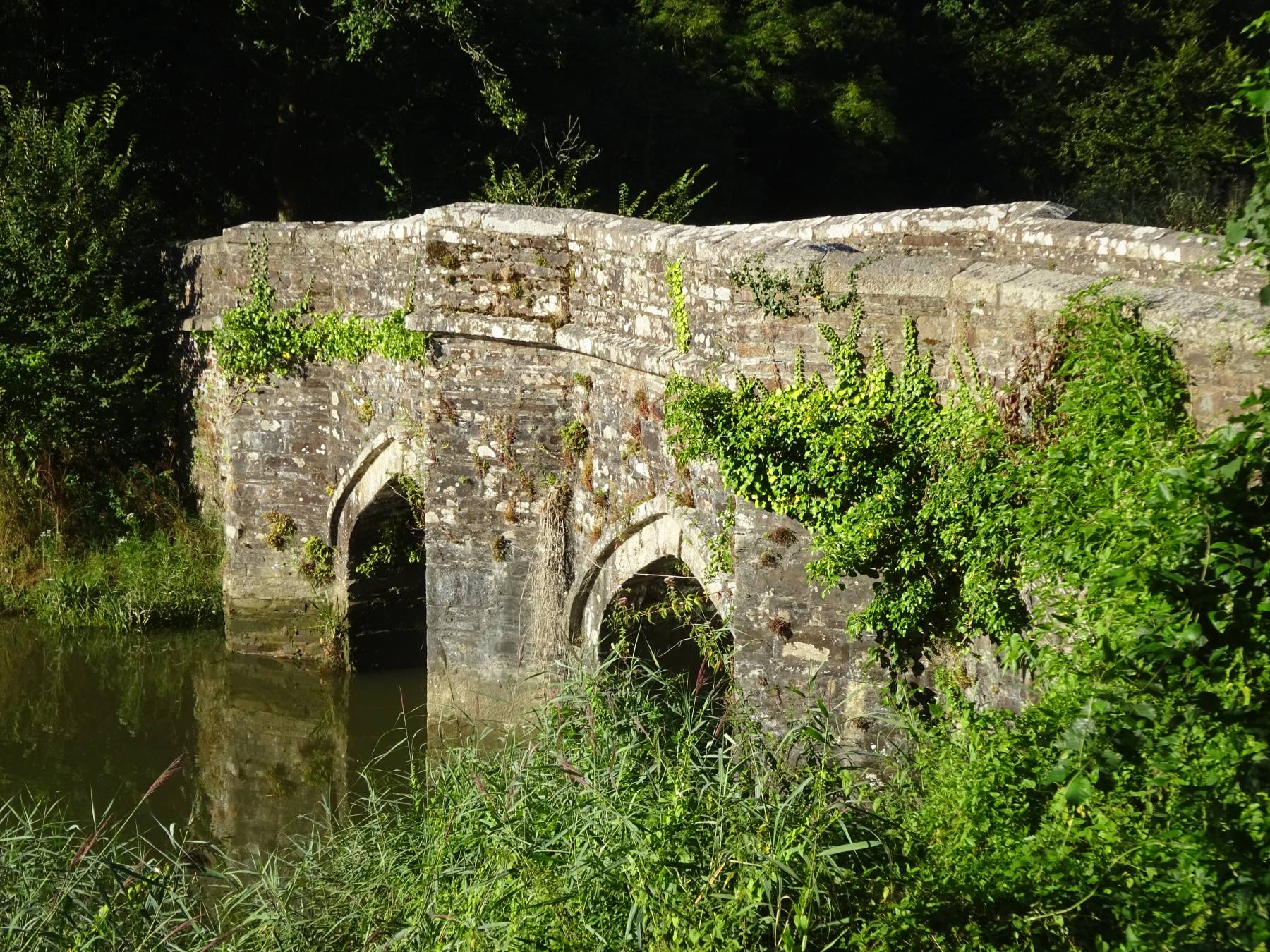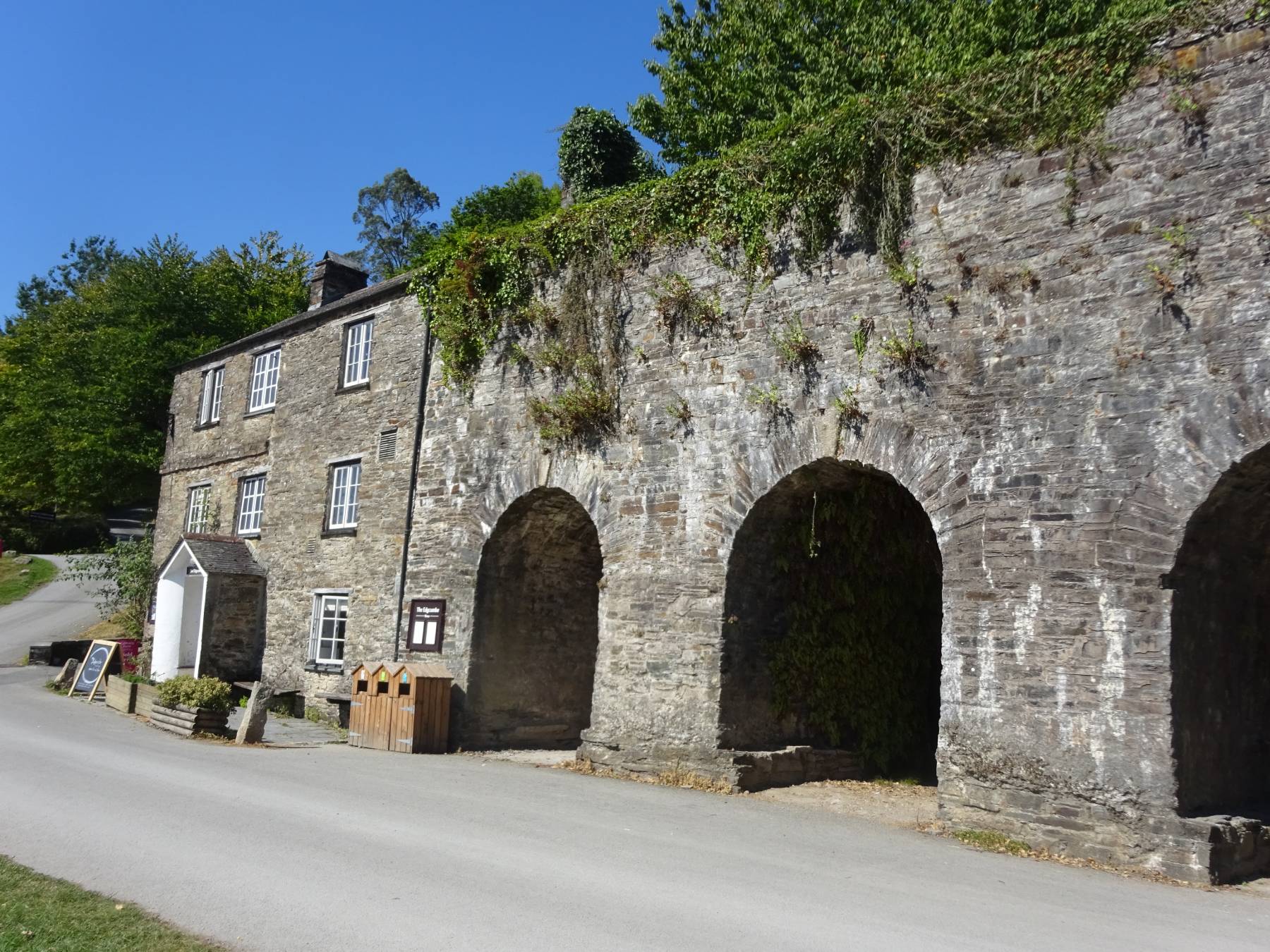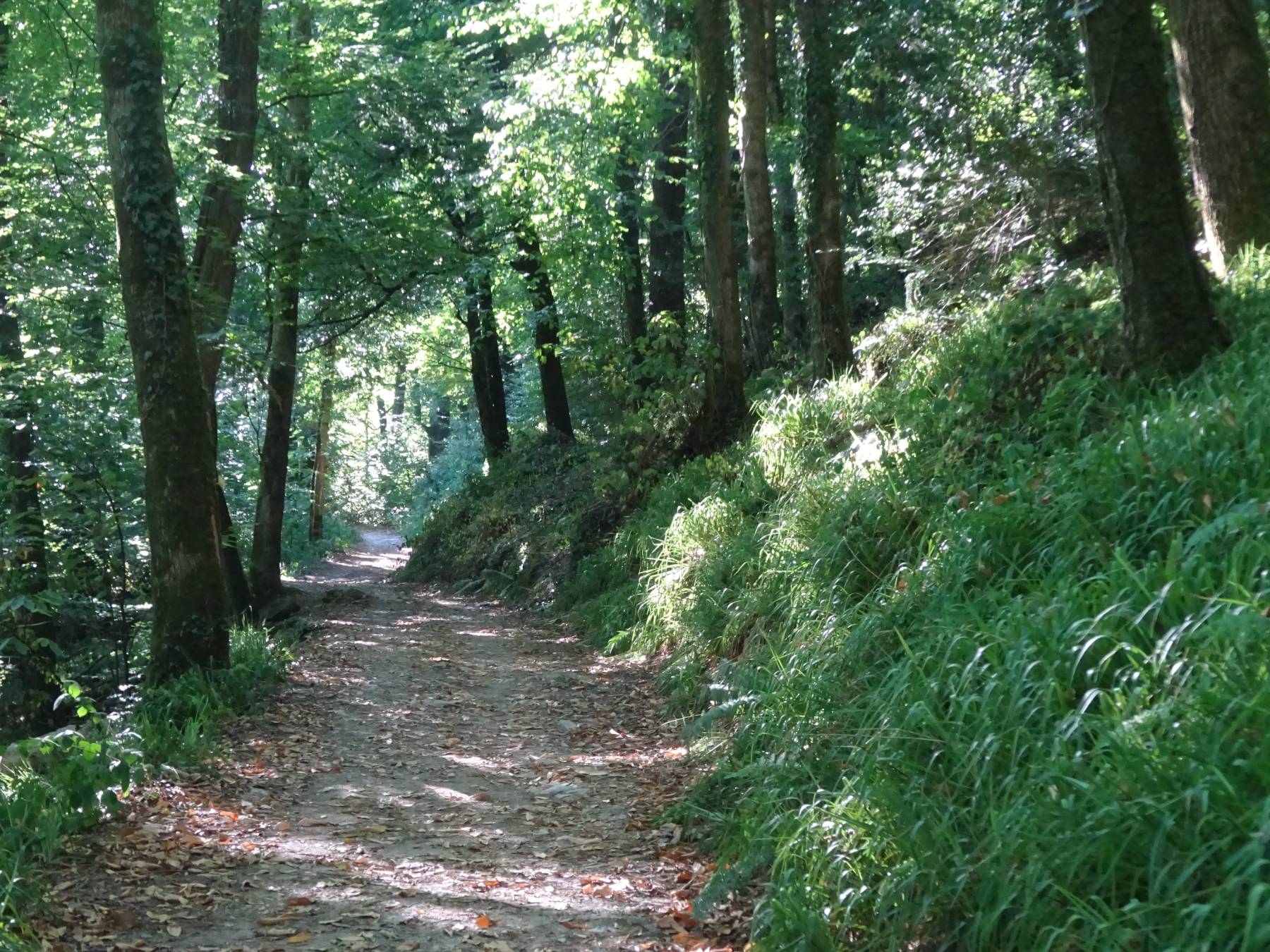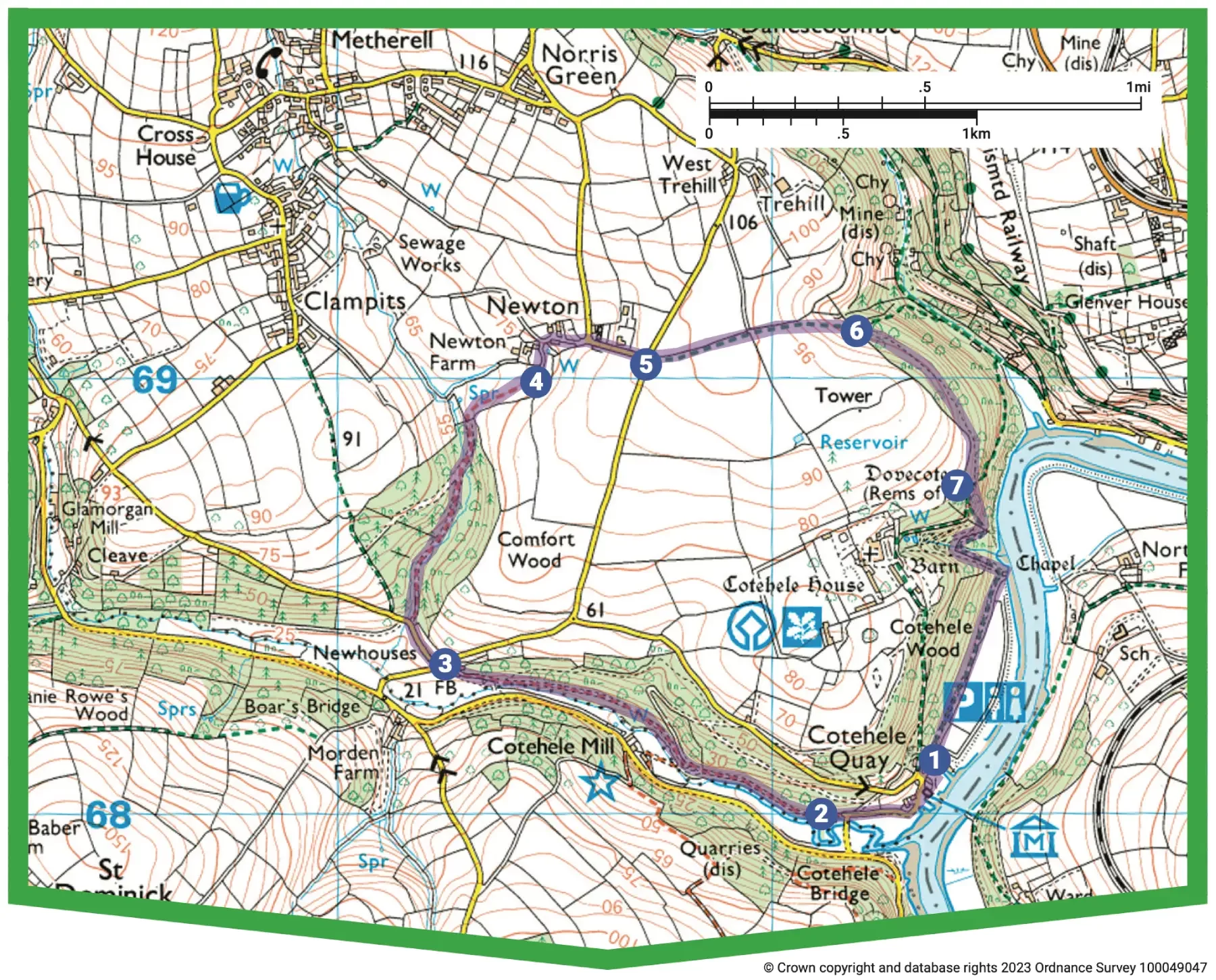Where a gate comes into view ahead, bear left on a rough way that descends to meet a broader path. Keep straight on; within a few paces, take the left fork and pick your way downhill. Pause at a rather exposed viewpoint, looking straight upriver towards the elegant 12-arched Calstock Viaduct, built between 1904 and 1907 and now carrying the Tamar Valley Line, linking Gunnislake and Plymouth. The Calstock to Gunnislake stretch utilises the former East Cornwall Mineral Railway line. Continue on, below Cotehele’s garden fence. The path drops towards the river and passes a small stone chapel, dedicated to St George and St Thomas à Becket and built around 1490 by Sir Richard Edgcumbe. During the Wars of the Roses, as a Tudor supporter, Sir Richard was pursued by followers of Richard III; he escaped from them at this spot. The chapel was built after the king’s defeat at the Battle of Bosworth. The broad, level track passes expanses of developing reedbed and intertidal marsh, created to attract species such as shelduck, little egret and redshank, and to alleviate flood risk in this part of the valley. When quayside buildings come into view ahead, bear left into the car park.

